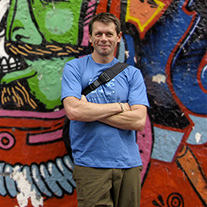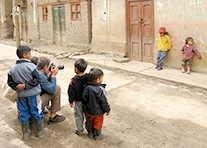<script type='text/javascript'>
parent.document.title = "Allen Craig Photography | About & Contact";
</script>
<script type='text/javascript'>
parent.document.title = "Allen Craig Photography | About & Contact";
</script>

Allen Craig Photography People, places and stories
As a photographer, writer and communications professional, I partner with organizations of positive change and other NGOs to create visual stories and essays that help communicate their efforts to the world—with a focus on Latin America.
I am extremely comfortable shooting in unplanned situations and in locations that might be deemed “questionable” or physically hard to get to. I travel only with the gear I need and with a minimum of fuss. I strategize my shoots upfront then jump right in, gaining the trust of a community, officials or subjects with a combination of confidence, humility, honesty, and a genuine concern for the people and situations I cover.
The end result is usually a collection of powerful, high-quality images that work together to tell a story—your story.
I have a degree in Advertising & Design and have worked in New York and San Francisco as a designer, art director and studio manager. I have run my own design firm and have worked closely with companies of many sizes developing communication strategies, identities, sales, marketing and promotion materials, web sites and advertising. But since 2005, I have devoted my time to capturing images, writing essays and learning about the world.
So, why would a non-profit organization need professional photography when many people carry a digital camera in their back pocket?
Everyday, NGOs and foundations scramble and fight for funding, reliable volunteers and recognition—in addition to doing the day-to-day work helping communities, families and children.
Acquiring funding to keep their doors open, not to mention for their next big project, requires an inordinate amount of energy and attention. It's a constant, on-going process. Unfortunately, few organizations can afford to have qualified people on staff whose sole job is to write grant proposals, massage online networks, nurture good public relations and arrange and attend in-person meetings. These efforts—although core to the viability of every NGO—are considered "administrative", and therefore often treated secondarily.
In fact, many major funders require NGOs to keep their administrative costs down to a tiny percentage of their total operating costs, hampering the very efforts needed to stay alive. (1)
Given these baseline funding challenges, you want to be sure that all your communications are clear and concise—even before they can be inspiring. A picture can be worth 1000 words, or none at all. It can clarify your vision and evoke compassion, or it can simply water down and confuse your message.
Even a simple photograph of a child's face can send different messages depending on expression, coloring, background, cropping and even context in which it's presented. You need to be aware of the message you want to express, and ensure it's being conveyed with every photograph and every word you put forth.
And on a technical note, it is true that if you present images that are low resolution, off-colored, badly composed, dated or redundant you subtly imply a carelessness that becomes a perception of your organization as a whole—as unfair as it seems.
So it's because you, like most NGOs, don't have the budget or staff to properly attend to these "administrative" efforts that you need to be EXTRA vigilant in powerfully and clearly communicating the value of your work—in order to keep doing that work, helping people, and moving the world forward in a positive direction.
I can help. You can contact me at allencraig@gmail.com
Download an article of mine here about a family outside México City reaching for their dream of a better life with the help of microloans. It was published by an NGO based in Los Angeles, and includes some photos.
(1) Download article: The Nonprofit Starvation Cycle,
by Ann Goggins Gregory and Don Howard, from the Stanford Social
Innovation Review

